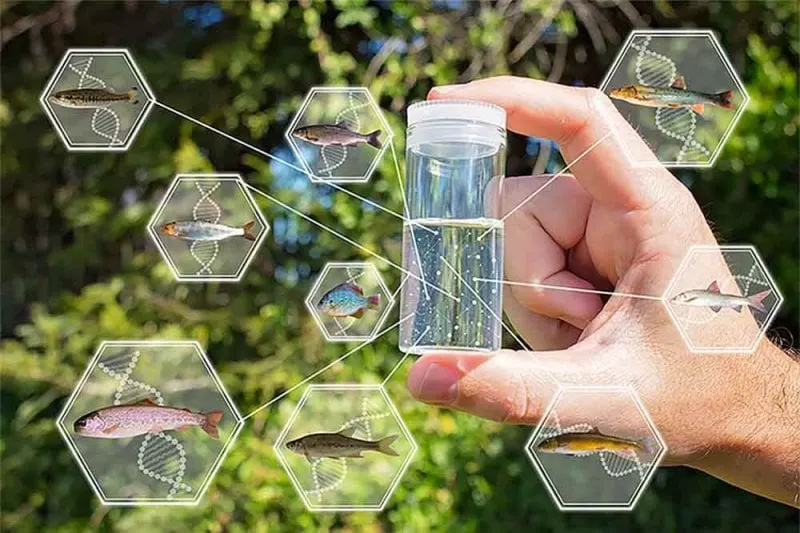How monitoring environmental DNA (eDNA) can help us conserve forests, rivers and other ecosystems
How monitoring environmental DNA (eDNA) can help us conserve forests, rivers and other ecosystems


Today, about 1 in 4 freshwater creatures face extinction. Wetlands are disappearing three times faster than forests. Across the globe, water quality is plummeting, polluted by plastic, sewage, mining sludge, industrial and agricultural chemicals and much more.
It’s challenging to study how these stresses are affecting aquatic life.
Innovations in genetic technology have created a powerful, affordable new tool that we are now testing. The process involves extracting eDNA from genetic material floating in the water — skin, scales, faeces and single-celled organisms, such as bacteria.
By analysing this genetic information, we can detect a wide range of species. We first considered using eDNA for our research in 2018, after several studies demonstrated its power to monitor single species of interest or groups of organisms in rivers and oceans.
Collecting eDNA is easy. One 4-ounce water sample can capture remnant DNA from thousands of aquatic species. This method doesn’t require killing wildlife for identification.
…
We believe this new approach represents a revolution for bio-monitoring, expanding our ability to quantify and study freshwater life. It’s also an important new conservation tool, allowing scientists to track changes in populations of endangered or invasive species.
This is an excerpt. Read the original post here.

 | Videos | More... |

Video: Nuclear energy will destroy us? Global warming is an existential threat? Chemicals are massacring bees? Donate to the Green Industrial Complex!
 | Bees & Pollinators | More... |

GLP podcast: Science journalism is a mess. Here’s how to fix it

Mosquito massacre: Can we safely tackle malaria with a CRISPR gene drive?

Are we facing an ‘Insect Apocalypse’ caused by ‘intensive, industrial’ farming and agricultural chemicals? The media say yes; Science says ‘no’
 | Infographics | More... |

Infographic: Global regulatory and health research agencies on whether glyphosate causes cancer
 | GMO FAQs | More... |

Why is there controversy over GMO foods but not GMO drugs?

How are GMOs labeled around the world?

How does genetic engineering differ from conventional breeding?
 | GLP Profiles | More... |

Alex Jones: Right-wing conspiracy theorist stokes fear of GMOs, pesticides to sell ‘health supplements’




 Viewpoint — Fact checking MAHA mythmakers: How wellness influencers and RFK, Jr. undermine American science and health
Viewpoint — Fact checking MAHA mythmakers: How wellness influencers and RFK, Jr. undermine American science and health Viewpoint: Video — Big Solar is gobbling up productive agricultural land and hurting farmers yet providing little energy or sustainabilty gains
Viewpoint: Video — Big Solar is gobbling up productive agricultural land and hurting farmers yet providing little energy or sustainabilty gains Trust issues: What happens when therapists use ChatGPT?
Trust issues: What happens when therapists use ChatGPT? Fighting deforestation with CO2: Biotechnology breakthrough creates sustainable palm oil alternative for cosmetics
Fighting deforestation with CO2: Biotechnology breakthrough creates sustainable palm oil alternative for cosmetics California, Washington, Oregon forge immunization alliance to safeguard vaccine access against federal undermining
California, Washington, Oregon forge immunization alliance to safeguard vaccine access against federal undermining 30-year-old tomato line shows genetic resistance to devastating virus
30-year-old tomato line shows genetic resistance to devastating virus The free-range chicken dilemma: Better for birds, but with substantial costs
The free-range chicken dilemma: Better for birds, but with substantial costs ‘You have to treat the brain first’: Rethinking chronic pain with Sanjay Gupta
‘You have to treat the brain first’: Rethinking chronic pain with Sanjay Gupta
